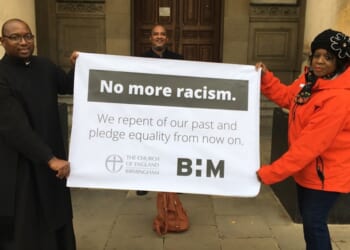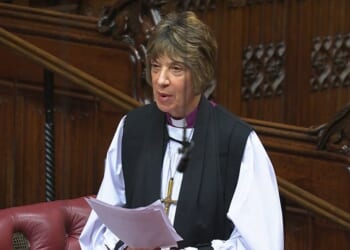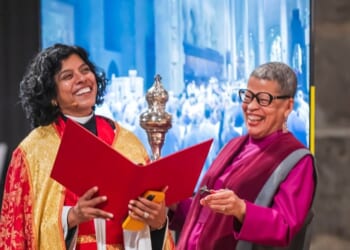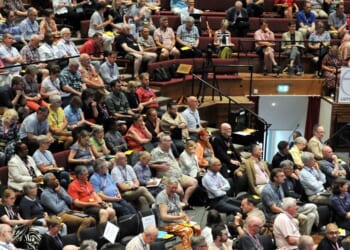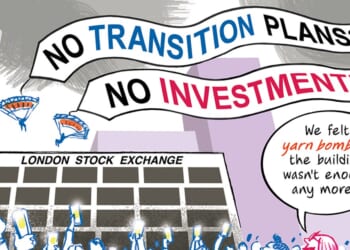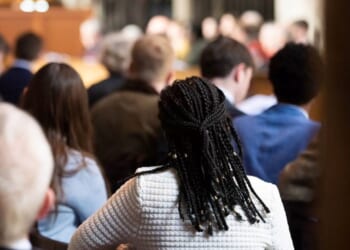RONY TABASH opened his shop on the corner of Manger Square, in Bethlehem, specially for the Archbishop of York. Pilgrim numbers in the Palestinian city are not what they were before the start of the current war in Gaza and the escalation of tensions in the occupied West Bank. There were few other visitors in town when Archbishop Cottrell arrived.
Business has been tough for shops, such as Mr Tabash’s, which sell olive-wood gifts and religious keepsakes. But you wouldn’t have known it from the smile on his face as he showed Archbishop Cottrell a video of him singing for Pope Francis on a papal visit to Bethlehem. Not to be outdone, the Archbishop proffered a snap of himself and Pope Leo, taken a week before.
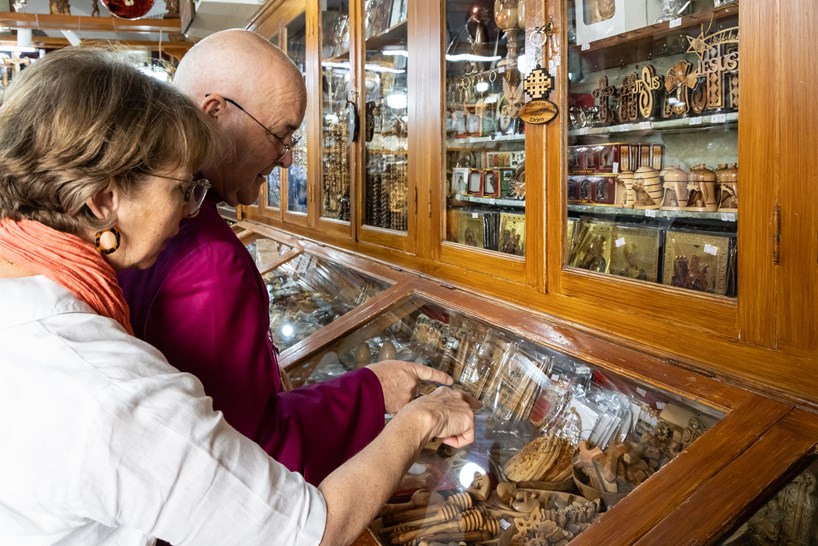 ANDREA KROGMANN/OFFICE OF THE ARCHBISHOP OF YORKThe Archbishop and Mrs Cottrell peruse items in Rony Tabash’s shop in Manger Square, Bethlehem, which had been opened specially for them
ANDREA KROGMANN/OFFICE OF THE ARCHBISHOP OF YORKThe Archbishop and Mrs Cottrell peruse items in Rony Tabash’s shop in Manger Square, Bethlehem, which had been opened specially for them
“We are one!” Mr Tabash repeated, ebulliently, when talking about relations between the Churches, before walking Archbishop Cottrell to the Church of the Holy Nativity — a place of worship which, like the Holy Sepulchre in Jerusalem, is shared by Christians of several denominations.
The conflict has increased bonds of solidarity between the Churches in Israel and Palestine. “People are connected with each other more, especially Christians in Bethlehem,” the Greek Orthodox Patriarchal Representative for Bethlehem, Metropolitan Benedictos, told Archbishop Cottrell.
They shared coffee and cakes in a back room before visiting the grotto where Christ is believed to have been born, where the Archbishop said a prayer for peace in the region.
A group of pilgrims from south India watched as the Archbishop and Metropolitan prayed together. But they hadn’t travelled far: they work in Tel Aviv, one member of the group told the Church Times. Outside in Manger Square, souvenir sellers bemoaned the dearth of tourists.
ECUMENICAL encounters were a regular occurrence on Archbishop Cottrell’s five-day trip to the Holy Land. In Nazareth, on Monday, he visited Mary’s Well, beneath the Greek Orthodox Church of St Gabriel, before walking to the RC Basilica of the Annunciation.
With Greek Orthodox and Anglican clergy, Archbishop Cottrell stopped off for a cup of strong, cardamon-infused coffee at one of the few open shops in the Old Market. A drop in tourists, the changing habits of locals, and the deleterious effects of corruption in the city have combined to leave the Arab-majority city in Israel in poor economic health.
Christmas and the ceasefire in Gaza, however, are bringing a degree of hope and an increase in pilgrims to the Holy Land. This was evident in the large groups of Indian and Nigerian pilgrims in the Church of the Holy Sepulchre, in Jerusalem, which Archbishop Cottrell visited on the final day of his pilgrimage.
He walked to the church from the headquarters of the Greek Orthodox Patriarchate, where the Patriarch, Theophilos III, had hosted a meeting of the Heads of Churches to welcome Archbishop Cottrell and his wife, Rebecca, and to thank them for their visit.
It was “tangible evidence” that Christians in the Holy Land were together, the Patriarch said at the gathering, which included representatives of the Syrian, Coptic, Ethiopian, and Armenian Churches, together with a Brother of the Franciscan Custody of the Holy Land.
Archbishop Cottrell was urged by the church leaders to use his voice to stand up for the people of Palestine, and particularly the Christians in the region.
“My views and opinions have not changed on this visit, but because I have seen the injustice in this land, it will be with greater clarity and greater commitment that I will be able to tell these stories,” Archbishop Cottrell said.




